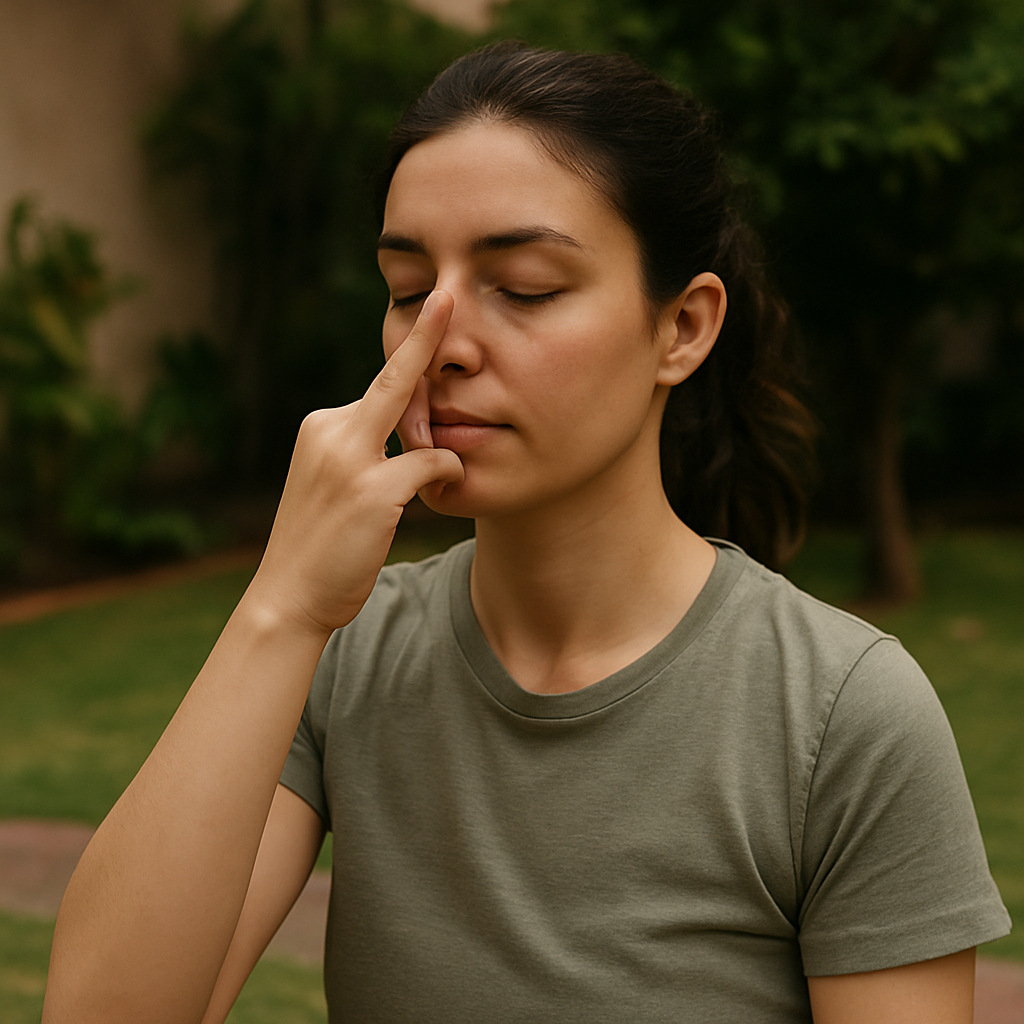Ask Ayurvedic doctor a question and get a consultation online on the problem of your concern in a free or paid mode. More than 2,000 experienced doctors work and wait for your questions on our site and help users to solve their health problems every day.
Shop Now in Our Store
What Is Anulom Vilom and How It Benefits Your Health

When people first hear about anulom vilom pranayama, they often ask: what is anulom vilom and why do so many yoga practitioners swear by it? Simply put, it’s a powerful breathing exercise rooted in ancient yoga traditions. Unlike just “deep breathing,” anulom vilom involves a very specific technique that balances both sides of your body and mind. The anulom vilom meaning is tied to harmony—inhale through one nostril, exhale through the other. This seemingly simple act can transform the way you feel, physically and mentally.
In today’s stress-filled lifestyle, we all look for practices that don’t require fancy equipment or expensive memberships. That’s where anulom vilom comes in—it’s free, simple, and deeply effective. From reducing anxiety to supporting lung health, the anulom vilom benefits are wide-ranging. But before you rush into trying it, let’s unpack the meaning, the benefits, the correct procedure of anulom vilom, and yes—even the potential side effects you need to be aware of.
Anulom Vilom Meaning and Origins
The term anulom vilom comes from Sanskrit. “Anulom” means “in a natural order” and “vilom” means “against the grain.” Together, anulom vilom pranayama symbolizes the balancing of opposing forces—the inhale and exhale, left and right nostrils, masculine and feminine energies.
Historically, this anulom vilom yoga practice is described in ancient yogic texts as a way to purify energy channels (called nadis). Practitioners believe it doesn’t just regulate the breath but also aligns body rhythms with the mind. That’s why it’s sometimes considered more than just a breathing exercise. It’s almost a meditation in itself.
Anulom Vilom Benefits for Mind and Body
The list of benefits of anulom vilom is surprisingly long. While modern science is still catching up with yogic wisdom, many studies support its positive impact on stress, lung capacity, and overall wellbeing.
Physical Health Benefits
Regular practice of anulom vilom exercise may:
-
Improve lung function, especially helpful for people with asthma or mild respiratory conditions.
-
Support better circulation by increasing oxygen flow.
-
Help lower high blood pressure over time.
-
Aid digestion since controlled breathing massages the abdominal organs.
One interesting thing is that many yoga teachers say anulom vilom helps detoxify the body. While “detox” is a buzzword that sometimes gets misused, in this context it simply means your body uses oxygen more efficiently, which naturally boosts energy.
Mental and Emotional Well-being
Equally important are the mental anulom vilom benefits. When practiced consistently, it can:
-
Reduce anxiety and calm racing thoughts.
-
Improve focus and concentration.
-
Stabilize mood swings by balancing the nervous system.
-
Encourage better sleep, especially when done before bedtime.
And here’s the cool part—because you focus on alternating nostrils, your brain has no choice but to stay present. It’s hard to think about bills or deadlines while you’re counting breaths, right?

How to Do Anulom Vilom Step by Step
So, now you might be wondering: how to do anulom vilom properly? Many beginners skip details, but the anulom vilom steps are actually quite simple once you break them down.
Preparations Before You Begin
-
Sit comfortably on the floor in a cross-legged position, or on a straight chair if that’s easier.
-
Keep your spine upright but relaxed.
-
Close your eyes gently and take a few normal breaths first.
Make sure you’re in a quiet place. Practicing right after a heavy meal is not recomended—it can feel uncomfortable.
Proper Anulom Vilom Technique
Now let’s walk through the exact procedure of anulom vilom. Follow these steps carefully, especially if you’re just starting out:
-
Use your right hand in Vishnu mudra: fold the index and middle finger toward your palm, keeping thumb and ring finger free.
-
Close your right nostril with the thumb. Inhale slowly and deeply through the left nostril.
-
Close the left nostril with the ring finger, release the thumb, and exhale through the right nostril.
-
Inhale through the right nostril, close it again with the thumb, and then exhale through the left nostril.
That’s one full round. Continue for 5–10 minutes if you’re a beginner. Over time, some practitioners build up to 15–20 minutes daily, but you don’t need to rush.
A common mistake is forcing the breath. Anulom vilom pranayama should be gentle—never push your lungs beyond comfort. Think of it as a soothing rhythm, not a race.
When and How Often to Practice
Morning is usually the best time for anulom vilom yoga, since your stomach is empty and the mind is fresh. Some people also find it very calming in the evening after work.
Start small: 5 minutes a day, and increase gradually. You’ll notice that on stressful days, even 2–3 minutes of anulom vilom exercise can feel like hitting a reset button.
And yes, consistency matters more than intensity. Practicing every day, even for a few minutes, will bring more noticeable results than doing a long session once a week.

Anulom Vilom Side Effects and Precautions
Like any wellness practice, anulom vilom pranayama isn’t for everyone. While most people experience only positives, there are a few important things to keep in mind.
Who Should Avoid This Pranayama
-
People with severe respiratory issues (like advanced asthma or COPD) should consult a doctor before starting.
-
If you’re pregnant, avoid holding your breath during the practice. Stick to very gentle, natural breathing.
-
Those with heart conditions or high blood pressure should practice only under supervision of an experienced yoga teacher.
In general, the anulom vilom side effects are rare, but if you feel dizziness, shortness of breath, or discomfort, stop immediately. It means your body isn’t ready for the pace.
Common Mistakes to Watch Out For
Even though the steps look easy, beginners often stumble with small details. Some of the common mistakes include:
-
Breathing too fast instead of slow, steady inhales and exhales.
-
Sitting with a hunched back, which restricts lung capacity.
-
Practicing right after meals, which causes bloating and discomfort.
-
Forgetting to keep count—timing matters for rhythm and balance.
Remember, the key is awareness. Anulom vilom yoga is less about perfection and more about mindful practice.
Anulom Vilom vs. Other Breathing Exercises
You might be wondering how anulom vilom exercise stacks up against other pranayama techniques.
-
Kapalabhati (skull-shining breath) is more energizing and involves forceful exhalations. Anulom vilom, by contrast, is calming and balancing.
-
Bhastrika (bellows breath) builds heat and vigor, while anulom vilom cools the system down.
-
Simple deep breathing can relax you, but anulom vilom has the added benefit of balancing both hemispheres of the brain through alternate nostril breathing.
That’s why yoga teachers often recommend anulom vilom as a foundation. It’s safe for most people, less intense than other pranayamas, and highly effective in restoring inner balance.
Conclusion
So, now that we’ve covered what is anulom vilom, its meaning, the benefits, and the right way to practice—let’s bring it all together. This ancient breathing technique isn’t some mystical ritual reserved only for yogis on mountaintops. It’s a simple, practical tool that anyone can use to bring more calm, clarity, and health into daily life.
The biggest benefits of anulom vilom come with consistency. Whether you want to reduce anxiety, sleep better, or improve focus, just five to ten minutes a day can make a big diference. And because the procedure of anulom vilom requires no equipment, you can practice it anywhere—before work, after exercise, or even on a short break at the office.
Of course, remember the precautions. While most people can enjoy anulom vilom pranayama safely, it’s not ideal for everyone. If you have specific medical conditions, it’s wise to check with a professional. And if you feel discomfort, don’t force it—just pause and return another time.
In the end, anulom vilom yoga is about balance. Left and right nostrils, body and mind, effort and relaxation. If you give it a fair try, you may find it becomes one of the most grounding and share-worthy practices in your wellness routine.
So why not try it today? Set aside just five minutes, sit quietly, and breathe. Who knows, it might just change the way you experience your entire day.
FAQs
Which disease is cured by Anulom Vilom?
Strictly speaking, anulom vilom does not “cure” diseases, but it can support healing and improve quality of life. Research and traditional practice suggest it may help with asthma, mild hypertension, anxiety, insomnia, and digestive discomfort. The key is that it strengthens the respiratory and nervous systems, which indirectly improves overall health.
Who should avoid Anulom Vilom?
While generally safe, those with severe lung diseases, serious heart problems, or high blood pressure should avoid unsupervised practice. Pregnant women should also avoid holding the breath. Always consult a health professional if you’re unsure.
Which chakra is activated by Anulom Vilom?
According to yogic philosophy, anulom vilom pranayama helps balance energy flow through all chakras, but it especially stimulates the Ajna chakra (third eye) and Anahata chakra (heart). This is why many practitioners feel calmer, more focused, and emotionally stable after practicing regularly.
This article is checked by the current qualified Dr Sujal Patil and can be considered a reliable source of information for users of the site.

